SI1 Diamonds – Do They Offer Better Value For Money?
Believe it or not, the bulk of diamonds in the market actually fall within the slightly included and included ranges. As the name itself suggests, slightly included (SI) diamonds have small imperfections and microscopic flaws in them.
Although the inclusions could be seen with ease using a 10X magnification loupe, SI1 diamonds will usually appear flawless to the naked eye of a casual observer. In fact, SI1 graded diamonds are great for people on a budget as they don’t have to compromise on cut quality to get a larger stone.
You could put a VS1 or VVS1 diamond beside an SI1 diamond and probably not tell the difference between the stones unless you examine them with a loupe.
In the SI clarity grade, you would usually expect to see inclusion types like clouds, carbon spots, pin points, twinning wisps or feathers (to name a few). What you really need to know is that even if two diamonds share the same exact GIA grading of SI1, they can look vastly different in real life.
Some diamonds may look totally eye clean and yet, some others might have flaws that would be noticeable immediately. Ultimately, the location, size and color of the inclusions play an important role in the face up appearance.
Examples of SI1 Diamonds You Should Look For
A grading report by itself will never be enough to make a judgment call on the diamond’s clarity and visual appearance. That’s why I always recommend shopping at vendors like James Allen or White Flash.
Both retailers offer high-definition videos of their diamond listings and enable you to see and scrutinize details in complete transparency. Here are two SI1 diamonds that are perfect examples of what to look for and I picked them out easily with the help of the video listings.
This D SI1 diamond has multiple colorless crystals that will appear invisible to the naked eye. While the inclusions are reflected around the diamond by the pavilion facets, the whitish color and tiny size make them a non-issue.
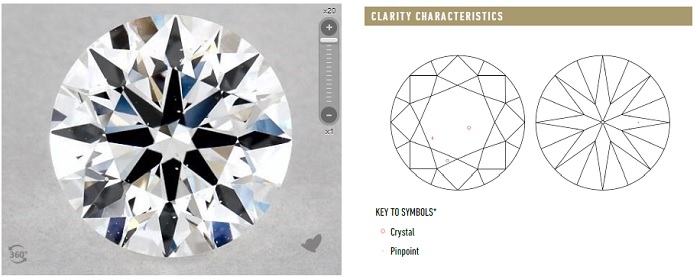
This 1 carat E SI1 diamond has a faint looking cloud and a small crystal under the table. Due to their size, they cannot be seen with the naked eyes and it makes the diamond eyeclean.
Now, there is also a large feather found on the pavilion side of the diamond which I would normally pay extra attention to. Since it will be hidden away from contact after the diamond is mounted on a ring, there’s no cause of concern.

Inclusions That Can Be Hidden By Prongs (Prongable)
1.00 Carat K Color SI1 Excellent Cut Round Diamond
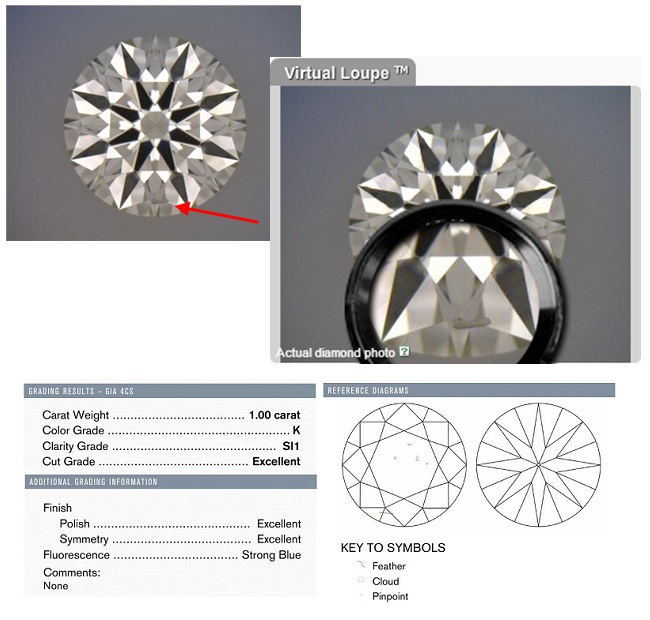
Prongable diamonds are another kind of slightly included diamonds I would recommend. In this particular example, the feather is embedded within the body and also localized in an inconspicuous area.
When the loose diamond is viewed by itself, the feather is colored and visible to the naked eye. However, this inclusion can be completely covered up by a prong during the setting process.
What Do You Need to Avoid And Take Note Of?
When inclusions are found or congregated together under the table facet, it warrants proper scrutiny of the diamond for eyecleanliness. That’s what happened in the example below…
1.02 Carat D Colored Ideal Cut Round Diamond

The size and location of the crystal inclusion make this diamond a poor choice. Besides being visually obvious, the crystal is also reflected into multiple images around the crown facets. By viewing the magnified photograph carefully, you should be able to pick out the faint reflections at the 3 o’clock and 5 o’clock arrow heads.
Now, if you were to take a look at its accompanying grading report, that is the only inclusion noted in the plot. If it wasn’t for this tiny crystal, the diamond would probably achieve an Internally Flawless (IF) grading instead.
What About Any Additional Comments Found In The Reports?
Here are some other things you need to pay attention to. Very often, you will see comments in the GIA/AGS report stating “additional clouds are not shown” or “additional twinning wisps not show”.
Sometimes, these statements are non-critical issues and won’t impact the appearance of the diamond. At other times, they can cause diamonds to look hazy! Without physically seeing the diamond, you can’t really gauge whether this would be an issue.
1.54 Carat G SI1 Diamond – Emerald Cut
Don’t rejoice too early if you think you found yourself a fantastic stone. The comments in this G SI1 diamond’s grading report is cause for concern. In such cases, it is best to have a gemologist inspect such diamonds or check the stone yourself.
1.00 Carat F SI1 Diamond – Round Cut
In this example above, the additional twinning wisps have caused the diamond to become cloudy in its appearance. If you click on the image, it’s pretty easy to see this from the video listing. Obviously, this is a diamond you definitely want to avoid.
Clean Looking Plots Are BAD And Signify Problems
If you see a grading report of an SI1 diamond, it is an immediate RED FLAG. I know this may sound a little counterintuitive but you need to be extremely wary when things look “too good to be true”.
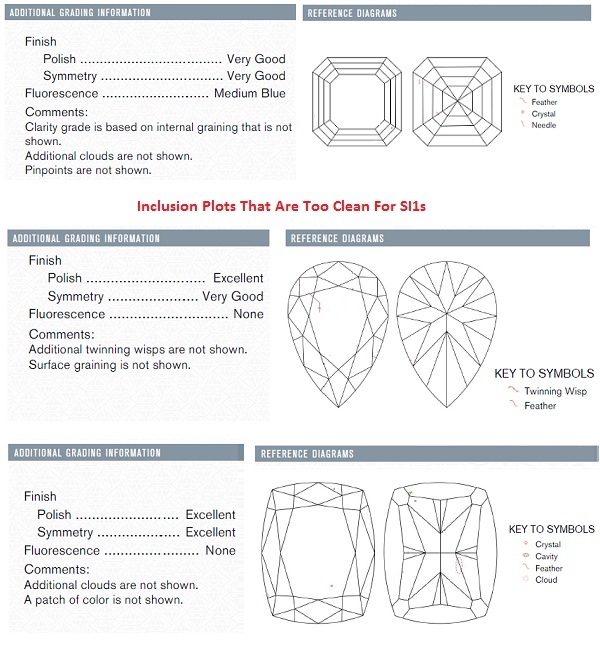
All 3 plots are suspicious looking by typical SI1 clarity standards. Avoid!
Where are all the inclusions? Why does the clarity plot looks like it is depicting a VS1 or VVS2 diamond instead? Instead, you will see statements like “Clarity grade is based on xxxxxxxx that is not shown” or “xxxxxxxxx not shown” in the comment section of the report.
Chances are, the diamond is going to look hazy or cloudy due to numerous un-plotted inclusions. You can see one such example in the video below where the diamond’s brilliance is adversely impacted.
How to Shop For SI1 Clarity Diamonds The Right Way
The trick to buying great looking SI1 diamonds is to seek out those with inclusions that are well-spread out. If I am personally shopping for myself, I tend to look out for inclusions that blend well into the diamond’s body and I would stay away from inclusions found near the center of the diamond.
Keep in mind that you should NEVER buy a diamond in the slightly included ranges without eyeballing it. If an online vendor doesn’t offer you photographs or videos to inspect the stone, work with one who does.
The rule is simple: No photographs/videos, no talk. You don’t want to end up with an appalling looking diamond to remind you of the bad decisions you made.
To put your mind at ease, they also offer physical reviews performed by their in-house gemologists for free. What happens here is that they can call in your shortlisted diamonds from their suppliers to check for clarity related problems and the diamond’s optical performance.
At the end of the review, they will give you a report and synopsis to follow up on their findings. This will then enable you to make further decisions on buying the diamond based on tangible data.
Related Articles
Leave A Comment

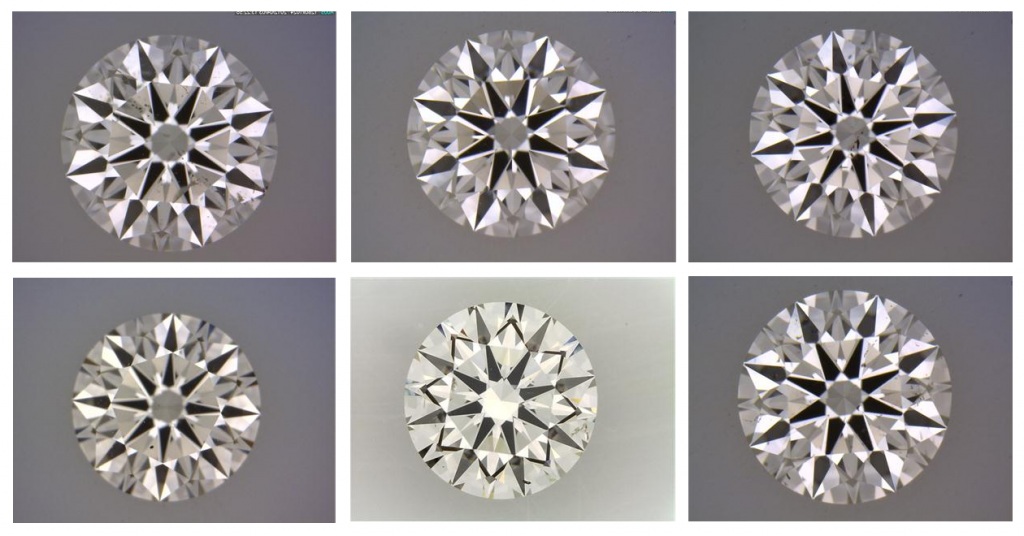
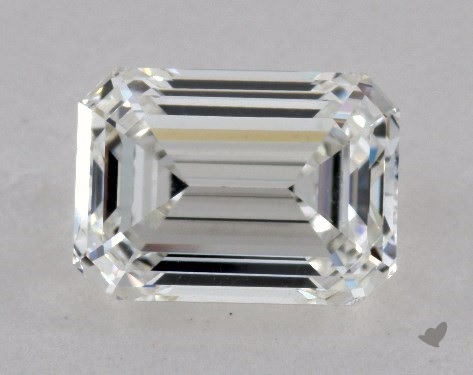
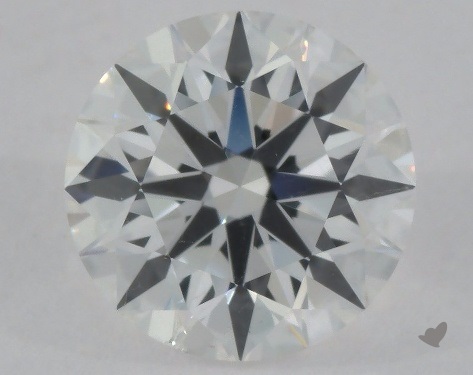
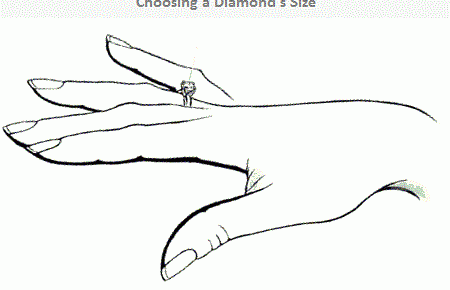
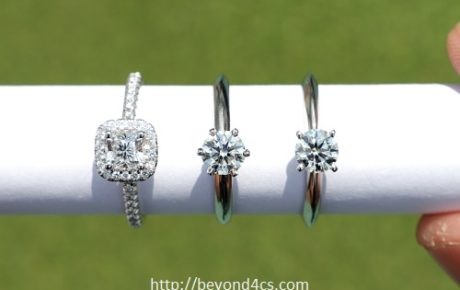
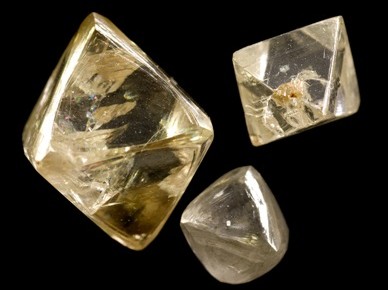
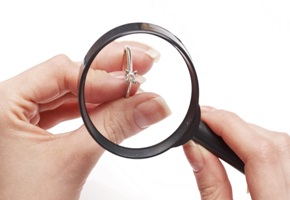









7 Comments
Hi Paul,
Thank you for all of the time and effort that you put into this website! I am on the search for an engagement ring for my girlfriend and your site has been so helpful!
Keep up the great work!!
Best,
Matt
Thank you for putting so much work into your website and writing. I am very happy that I found your site and decided to educate myself on this major purchase! I have bookmarked several diamonds from Brian Gavin and Whiteflash and would like your opinion, if you would be so kind.
1. Budget is US$7500-8000 or so. James Allen, Whiteflash, and Brian Gavin are where I am going to shop (and will do so linking from your site).
2. The diamond I am shopping needs to be a round brilliant and is going into a size 5.25 platinum setting. I am considering ~0.80 to 0.93 carat weight. ~1.0 carat stones with Ideal cut seem to be a bit out of my budget.
2a. I have been searching for AGS Ideal cuts (cut is king, right?), color D-G, clarity IF to VS2.
2b. I have looked as SI1 diamonds, but I have yet to find anything without many inclusions right on the table… I suppose I don’t know how to judge “eye clean” yet, but am open to SI1 if we can find a good one. Also, is my color range appropriate for a platinum setting? I did not extend the search to color H.
3. About her: the criteria above are what she had in mind, so we are on the same page. About me: I am an agricultural scientist with degrees in soil science, closely related to geology, so this study of rocks is quite interesting to me.
Here are some links, split up by weight.
~0.80 carat Whiteflash links:
https://www.whiteflash.com/loose-diamonds/round-cut-loose-diamond-3833714.htm
https://www.whiteflash.com/loose-diamonds/round-cut-loose-diamond-3365312.htm
Brian Gavin Blue (this is pretty cool):
http://www.briangavindiamonds.com/diamonds/diamond-details/0.805-g-vvs2-round-diamond-ags-bl-104094817056
~0.90 carat Brian Gavin links:
http://www.briangavindiamonds.com/diamonds/diamond-details/0.903-g-vs1-round-diamond-bkags-104094160095
http://www.briangavindiamonds.com/diamonds/diamond-details/0.931-g-vs2-round-diamond-bkags-104094817033
Thanks for emailing and being so clear about what you are looking for. It helps both of us out.
IF you don’t need IF clarity for symbolic reasons, don’t waste the money on something your naked eyes cannot see. For practical purchases (I’m one of these people), go lower in clarity like SI1/VS2 and near colorless G color ranges. Well cut diamonds in these ranges will look identical to D/IF diamonds in the face up view even if they are placed side by side.
This link should help address concerns: https://beyond4cs.com/clarity/resize-technique/
Now, I reviewed all the diamonds you shortlisted. They are all well cut for light performance and are winners in their own rights. The distinction here lies in clarity/carat/color combinations.
This would be my top choice from your selections:
http://www.briangavindiamonds.com/diamonds/diamond-details/0.931-g-vs2-round-diamond-bkags-104094817033
I did a search for you and would recommend these diamonds to get better value for money. By dropping lower in to the slightly included 1 grade, you can save money and still get an eyeclean diamond.
http://www.briangavindiamonds.com/diamonds/diamond-details/0.934-g-si1-round-diamond-ags-104083068034
http://www.briangavindiamonds.com/diamonds/diamond-details/1.015-f-si1-round-diamond-ags-bl-104089117005
Personally, I’m a fan of fluorescence and I think most people with a background in geology would appreciate that too.
From White Flash, these would be diamonds I would recommend.
https://www.whiteflash.com/loose-diamonds/round-cut-loose-diamond-3802924.htm
https://www.whiteflash.com/loose-diamonds/round-cut-loose-diamond-3793657.htm
All the diamonds above are fantastic choices and there really is no right or wrong selections here. It is a choice of personal preference.
I would let the choice of setting be a big factor with whom to work with.
I am having a hard time finding a round diamond for an engagement ring and mainly which of the C’s to scale back on in order to have the best ideal cut. I’ve looked at Brian Gavin and Whiteflash “a cut above” diamonds mainly for the hearts and arrow cuts, but am concerned with if it is worth it to have the best cut if I can only afford an H color and SI1 clarity. My price range for the diamond is right around 10k, preferably a little less, but I am a little flexible if the perfect stone is found. Ideally I would like a carat weight of 1.25 to 1.5, but again I’m not sure if a 1.2 is that much smaller to a 1.3 or so. Again the hardest part so far is whether an H color is acceptable or I should go up to an G, and how to spot inclusions that would be noticeable just by looking at the diamond with no magnification.
The other option I was considering is the Brian Gavin blue collection, I don’t mind if the diamond lights up if we play laser tag (not really gonna happen), but will the fluorescent affect the diamond in any other way?
Thanks for the help,
It’s definitely worth it to prioritize better cut over color/clarity. Cut quality improves face up appearances with light return making it look whiter. Better sparkle masks inclusions as well and most SI1s are clean to the eyes. As for fluorescence, there’s generally no issue except for lowering prices and the blue glow under black lights.
If you are color sensitive, go up to a G color. Personally, I am very acute with my eyes and I find that G is the sweet spot for icy white appearances while getting the best value for money.
This would be a diamond I would recommend and one that is good enough for me to buy personally.
https://www.briangavindiamonds.com/diamonds/diamond-details/1.215-g-vs1-round-diamond-ags-bl-104096323031
If you want a diamond without fluorescence, this would be a great buy:
https://www.whiteflash.com/loose-diamonds/round-cut-loose-diamond-3947660.htm
Since deciding to pop the question, I’ve been on your site regularly. You’re content is very helpful. Generally, my max budget is $16,500 including a setting. I’m looking for an excellent cut, 1.75 to 1.9+ carat diamond, H-F, and primarily VS2 and above.
I’d love your advice and thoughts on these diamonds that are on my short list (below). I’ve run both through the HCA tool (which I know is not a selection tool), and both seem to be within or around TIC range, which means I am comfortable digging deeper.
1. 1.8 ct, H, VS1 (aka “the spread diamond”) – https://www.jamesallen.com/loose-diamonds/round-cut/1.80-carat-h-color-vs1-clarity-excellent-cut-sku-2873092
o Things I like: I really like the diameter measurements of this diamond, and the symmetrical proportions. The diamond also looks very clear – not just of inclusions, the angles look sharp and defined. No florescence here, so it’s not likely to look hazy.
o Things I’m concerned about: I am very concerned about the spread and the dark appearance. The table is likely too large and the crown angle and percentage don’t likely make up for it.
o HCA score is 1 and I’m sure it will perform OK, but I’m curious about your general thoughts on this diamond and whether the dark appearance will be noticeable once the diamond is in a setting and in natural light.
2. 1.8 ct., H, SI1 (aka “the included diamond”) – https://www.jamesallen.com/loose-diamonds/round-cut/1.80-carat-h-color-si1-clarity-excellent-cut-sku-3093316
o Things I like: I really like the cut and proportions of this diamond. It really seems to pop. I also thing the color is very good for an H – one of the better H diamonds I’ve seen.
o Things I’m concerned about: Obviously, here I’m worried that the inclusions will be noticeable and that the diamond isn’t eye clean. I spoke with a James Allen rep who said the inclusions here would only be noticeable under magnification. I have doubts about this. There’s really only one way to tell (i.e. buy it and see for yourself), and I know we’re dealing only with pictures here.
o HCA is 1.8, which seems justified based on the proportions. I’m curious about your thoughts on the inclusions. Could cut make up for it? Are the inclusions something to compromise on to get the size, color, and pop of this diamond? When zoomed out, I can’t see the inclusions, but based on your experience with SI1 diamonds, what do you think?
If you have any other diamonds in mind that are similar to what I’m looking for, please send them my way.
The 1.8ct diamond option would be the lesser devil out of the 2 you picked. Clarity is not the problem as both stones are eyeclean. But, both are mediocre stones in their cut quality standards. Dump them.
If sparkle and light performance are your priorities, this is the diamond I would recommend buying instead. It is a much much much better stone than the ones you shortlisted.
https://www.jamesallen.com/loose-diamonds/round-cut/1.70-carat-g-color-si1-clarity-excellent-cut-sku-2785618